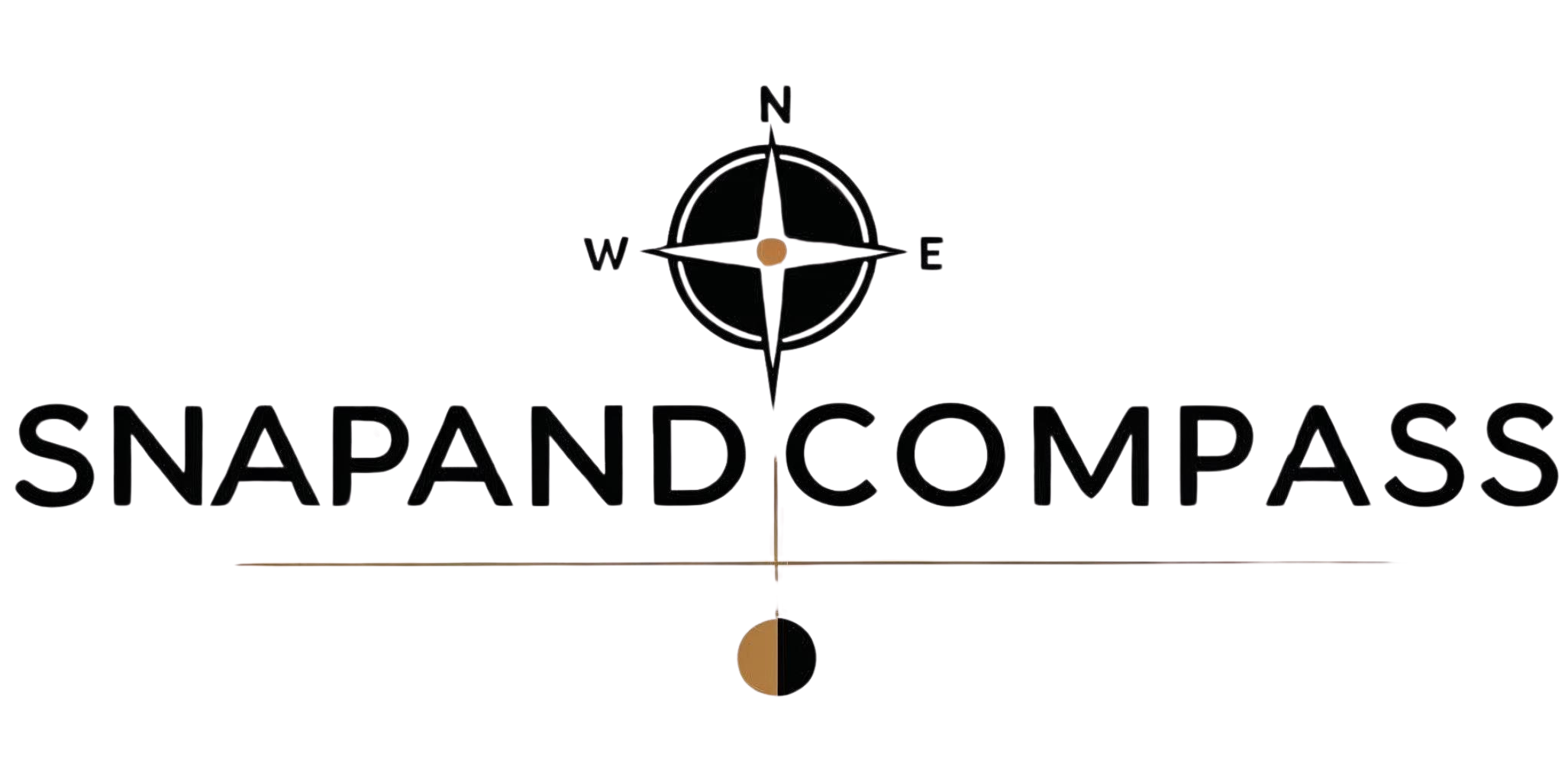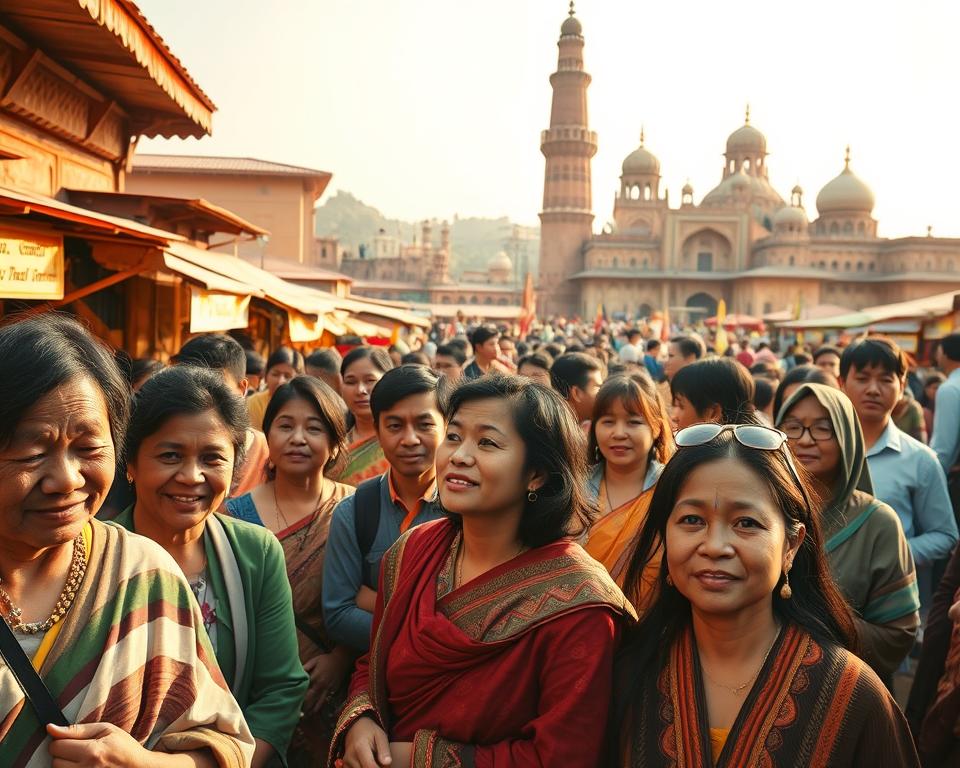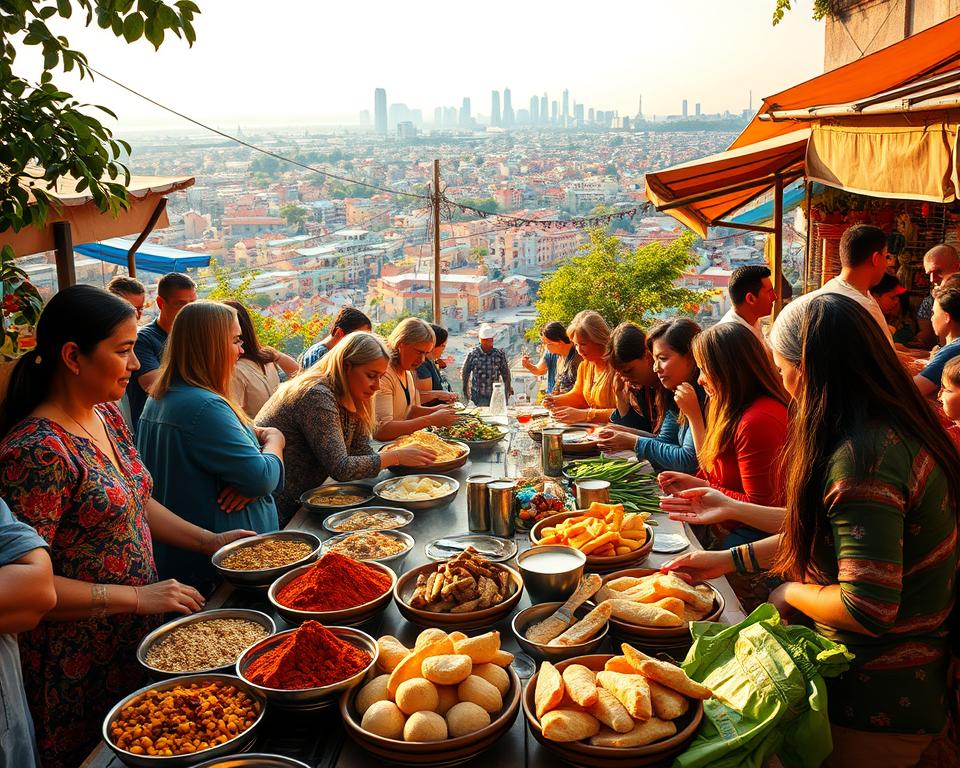Anúncios
Can one night, one show, or one meal change how you plan a trip? This report helps you answer that question for your work in travel and tourism.
You will get a clear, practical view of what matters for U.S. planners, marketers, and designers today. Expect lessons from big wins and public misfires. Learn why quality, safety, and story now matter more than pure spectacle.
Why this report matters: it links real venues like ABBA Voyage, Sphere, Epic Universe, and Qiddiya to actionable steps for your campaigns and attractions. It explains which technology—AR, VR, LED, spatial audio—fits your goals and budget.
Read on to find short, practical guidance for piloting ideas, measuring impact, and scaling work that respects accessibility, data ethics, and official travel advice.
Introduction: Why Experiences trends 2025 matter to your travel and marketing strategy
Experiences trends 2025 set a new baseline: your strategy must match higher standards for immersion, safety, and storytelling. Consumers expect more polish than in 2022, and operators now focus on technical standards and guest safety to avoid costly misfires.
Anúncios
Today, audiences want reliable delivery, not vaporware. AR/VR, massive LED surfaces, and spatial audio are mainstream tools you can and should plan for. At the same time, business realities—budgets, uptime, accessibility, and clear data practices—will limit what you can deploy and how you operate it.
- Tourism is shifting toward nature-led, wellness-forward activations and IP-driven nostalgia that pull families.
- Experiential marketing now blends live and digital to keep engagement before, during, and after visits.
- Employee experience and enablement shape guest outcomes more than many teams expect.
Be responsible: verify visas, entry rules, and local advisories with official sources before you promote travel. You’ll get practical examples and clear steps in the next sections to adapt for your business and audience.
Immersion grows up: Quality, safety, and storytelling over spectacle
Trust beats hype. You should move from flashy claims to clear standards that protect guests and your brand.
Anúncios
Public failures in 2024 showed how misleading promotion and weak operations hurt attendance and reputations. Use those cases as lessons, not templates.
From hype to standards: avoiding misfires and building trust
Set transparent content guides, capacity plans, and precise age guidance before tickets go on sale. Run pre-opening previews, safety testing, and content QA.
Design accessibility and sensory practices into every show. Offer opt-in intensity, decompression zones, and calm exits to respect wellness and families.
Year-round eerie entertainment and the demand for “recreational fear”
Permanent horror operations like Universal’s Dark Universe and Universal Horror Unleashed show how year-round scares can work when staffed and redundant systems are solid.
- Turn hype into standards with clear communications and realistic marketing.
- Collect guest feedback, use crisis playbooks, and train staff continuously.
- Refresh classics thoughtfully — upgrades often outperform new builds.
Outcome: When you prioritize safety, accessibility, and honest storytelling, people return and recommend your events long after the opening week.
Technology stack to watch: AR, VR, LED, holograms, and Shared Reality
Not every tool fits every site — pick technologies that solve a real guest problem, not a headline. Start with a clear use case and budget, then match platforms to outcomes: storytelling, training, large-scale spectacle, or audience sync.
Layered immersion: projection mapping, spatial audio, omnidirectional vehicles
When to use each: AR layers narrative on-site for walking tours and interactives. VR is ideal for previews and staff training. LED and holograms deliver the large-scale “wow” in arenas and domes.
Projection mapping plus spatial audio creates depth without heavy physical sets, saving budget and load time. Omnidirectional vehicles add motion to storytelling where footprint allows.
Case in point: ABBA Voyage, Sphere, and Shared Reality domes
ABBA Voyage blends real-time visuals and lighting for lifelike performances. The Las Vegas Sphere pairs the largest high-res LED surface with concert-grade audio to match content to venue strengths.
Cosm’s 12K+ LED domes act as a many-to-one canvas, syncing audiences around a single piece of media for unified impact.
Operational tips: content pipelines, uptime, and accessibility by design
Operational musts:
- Set latency targets, content versioning, and refresh cycles.
- Plan hardware maintenance windows and show-control redundancy.
- Right-size tools to audience density — not every area needs headsets.
Accessibility and budget: Design captions, audio description, mobility routes, and sensory profiles from day one. For budgeting, consider a 70/30 split: 70% production and 30% ongoing maintenance and updates as a starting example.
Destination spotlights: Epic Universe, Qiddiya, and digitally connected environments
Spotlight destinations show how design, data, and hardware work together to shape guest journeys.
Universal’s Epic Universe opens May 22 with mixed-media lands that blend high-res projection, AR, spatial audio, and omnidirectional vehicles. Key rides include Harry Potter’s Battle at the Ministry, Mario Kart AR mapping, Donkey Kong’s dynamic track, and motion flying on How to Train Your Dragon.
Qiddiya City pairs Globant-led AI, analytics, and cloud platforms across 400+ attractions. Expect holography-equipped stadiums and VR/AR in performing arts—built to tie ticketing, retail, and ops data together.
Design insights you can apply now:
- Study Epic Universe queue design and interactive pre-shows to set throughput targets per activity.
- Factor how trackless and omnidirectional vehicles alter evacuation and scene layout.
- Sync media, wearables, and mobile apps so social flow isn’t interrupted.
- Use AI-driven analytics to connect ticketing, retail, and live operations at scale.
Practical actions: build opt-in data moments, deploy dynamic wayfinding, plan seasonal content, and train teams for multilingual, accessible operations. Phase features on a year-based roadmap to test and scale what works.
Environmental immersion: Nature as the canvas
Nature can be your stage: use wind, light, and seasons to shape calm, curiosity, and moments of discovery. Outdoor media gives you options to create wellness-forward pauses in public areas and gardens.
teamLab Osaka, Kew Gardens, and living media made simple
teamLab Osaka shows how a former factory site becomes grassland art that shifts with weather and dusk. This model helps you reclaim post-industrial areas into contemplative cultural spaces.
Kew’s Of the Oak uses real data to make water, oxygen, and carbon flows tangible through sound and light. Translate that idea for U.S. parks by turning ecology into sensory stories visitors can feel.
- Use GPS-triggered audio walks, light-touch projection, and minimal infrastructure.
- Design quiet zones and low-light accessibility to support reflection and wellness.
- Add family activities like guided sketching or field recording to deepen attention.
Measure success by dwell time, repeat visits, and sentiment. Plan seasonal adventure overlays and clear weather contingencies so guests know what to expect in the outdoor world.
Cruise experiences reimagined: Floating theme parks and multisensory dining
On modern ships, you can move from active mornings to calm story lounges without leaving the same deck.
Why it matters: Disney Treasure, Carnival Jubilee, and Princess Cruises show how compact attractions and layered technology make a sea day feel like a micro theme park.
Disney Treasure’s haunted parlor and story-led lounges
Use story-led lounges like the Haunted Mansion Parlor to create adult-friendly night options that still align with families. The Ghost Fish Aquarium and illusion effects turn a lounge into an attraction without heavy footprint.
Carnival Jubilee’s Currents and multi-zone media
Design multi-zone media ecosystems—wave-shaped LEDs, window displays, and immersive sound—so guests discover new scenes each visit. Let guest input alter noncritical visuals while protecting show timing and safety.
Princess Cruises’ 360 dining and synchronized senses
Coordinate visuals, scent, soundtrack, and tactile tables so dinner feels like a single piece of theater. Train staff on pacing and quick resets so the meal remains cohesive, not chaotic.
- Offer varied intensity options and clear guides for families and sensory needs.
- Schedule events across decks to spread crowds and avoid queue spikes.
- Use mobile pre-shows and scavenger hunts to turn transit into play.
- Keep tech maintenance offshore and train crews for quick resets.
Balanced-day example: active mornings, shaded media mid-day, calm story lounges at night. Capture opt-in engagement signals to refine programming across the year and across ships.
Immersive F&B and LBE: From Eatrenalin to Netflix House
Turn meals into acts: when food, motion, and timed media align, guests remember the night more than the menu. This model works across restaurants, museums, malls, and location-based entertainment (LBE).
Media-meets-meals: ride-based dining and film-synced courses
Seat pacing to scene changes. Eatrenalin’s ride vehicles and Fork n’ Film’s synced courses show how timing lifts perception and value.
Tip: map courses to media beats so a savory arrives at a suspenseful moment and dessert lands during a reveal. This improves perceived value and supports premium pricing.
Brand worlds in real life: Sony’s Wonderverse and Netflix House venues
Let branded IP provide hero moments, not constant wallpaper. Sony’s Wonderverse and Netflix House use key bars and rooms to anchor a larger space.
For malls and group operators, balance dwell time with retail conversion by clear wayfinding and mixed ticket/retail offers.
Pop-ups that perform: McDonald’s WcDonald’s and other activations
- Pilot short runs to test pricing, throughput, and tech needs.
- Design resets for quick table turnover and easy service access.
- Choose technology your staff can run daily; complexity should serve story, not distract.
Final checklist: match menu pacing to content, use IP lightly in tight spaces, include allergen transparency, and track repeat visits and UGC alongside ticket revenue. These steps help you build memorable events that link food, culture, and brand.
Nostalgia and evergreen IP: Emotional shortcuts to engagement
Nostalgia is a practical shortcut — it helps people reconnect with a beloved world while you layer fresh, modern surprises.
Use it thoughtfully. Super Nintendo World and Donkey Kong Country show how retro play feels new in modern parks. AREA15’s Teletubbies event and Mattel Adventure Parks prove character-driven rooms draw families and fandoms.
Keep the focus on inclusion and wellness. Offer quiet corners, low-intensity versions of high-energy segments, and clear sightlines so families move with ease.
Match IP to local tastes and test which years or themes land best. Tie revivals to anniversaries and new content drops to extend interest across the year.
- Host community nights and cosplay-friendly events to build belonging.
- Mix analog play with digital touchpoints to limit screen fatigue.
- Refresh photo ops and limited merch often to sustain repeat visits.
Measure success by multi-generational attendance, referral rates, and repeat visits — not by opening-week hype alone.
Experiential marketing playbook for 2025
Focus your work on one clear objective and a single hero audience. That decision guides which marketing tools and platforms you pick, and it keeps creative sprints efficient.
AI-driven hyper-personalization
Use AI to adapt pacing, content choice, and accessibility cues in real time. Explain what data you collect, why you collect it, and how it changes a guest’s moment.
Practical step: run a short pilot that maps emotion or behavior to three content variants and measure engagement depth.
Gamification with purpose
Build mechanics that teach or unlock value—like Adidas x Les Mills Live’s movement challenge that rewards learning-by-doing. Keep rules simple and clearly tied to the goal.
Hybrid live and platforms
Design hybrid by intent: preview online, deliver a signature IRL moment, then sustain connection on platforms such as Roblox. Use low-tech fallbacks for latency and device diversity.
- Tease — short content to drive registration.
- Register — simple opt-in with consent and choice settings.
- Activate — in-person moment, AI-driven pacing, or gamified tasks.
- Capture — rights-cleared assets and data for follow-up.
- Re-engage — value-driven messages focused on advocacy and qualified leads.
Design with calm aesthetics—quiet luxury and slow living—to reduce overstimulation and boost recall. Track analytics tied to outcomes, plan for consent and latency challenges, and document handoffs so your team repeats success across spaces and time.
Experiences trends 2025 through the lens of work and employee experience
Begin with the daily grind—streamlining routine steps frees teams to focus on moments that matter.
Make work less chaotic: simplify processes and listen continuously
Simplify handoffs and remove unnecessary approvals so your people can deliver guest experience reliably without burnout.
Increase pulse and passive listening with transparency: share what you hear and how you act. Listening rose from 35% to 48%—use that momentum.
Gen Z optimism, retention levers, and journey analytics
Under-25s are engaged and proud but face cost and growth pressures. Use journey analytics to map onboarding, recognition, and development moments.
Train managers to interpret data quickly and close the loop with teams. Small, timely interventions improve retention.
First and last impressions: fix candidate and exit moments
Candidate and exit moments shape employer brand. Audit those touchpoints and remove friction to protect future recruiting and referrals.
Trust factors: competence, integrity, benevolence—why benevolence lags
Trust scores show competence 68%, integrity 67%, but benevolence only 56%. Demonstrate benevolence by policies that prioritize people in real situations.
- Provide clear AI enablement with guardrails; prioritize quality over volume.
- Connect employee engagement to guest satisfaction to justify investment.
- Share decision rationale to build integrity and cut rumor cycles during change.
“38% of employees feel pressure to increase productivity; 59% are comfortable with passive listening; 45% use AI weekly or daily.”
Focus your efforts where small improvements unlock big wins. Listen often, act fast, and measure the outcomes that matter to your business.
Data, ethics, and AI enablement: Measurement that respects people
Good measurement balances curiosity with clarity: collect minimal data, explain why it matters, and give people control over sharing. That approach protects trust and helps you make smarter choices about guest interactions.
Active and passive listening
Blend short pulse surveys with passive behavioral signals from XM platforms so you see both intent and action. Pulse checks capture sentiment; passive signals show how people actually move and engage.
Keep it simple: define what you measure, set short retention windows, and get clear consent up front.
AI adoption reality and tool sprawl
Many teams use AI frequently: 45% use it daily or weekly and 72% of heavy users feel optimistic. Yet tool sprawl is real—23% mix work and personal apps, 30% self-source tools, and 48% rely on company-provided systems.
Standardize tools and training to reduce risk, and publish plain-language AI principles so everyone knows the guardrails.
KPIs that matter
Track outcomes tied to experience: engagement depth, dwell time, conversion, sentiment, and advocacy. Use cohort analysis to compare how different groups respond to the same activation.
“Listening frequency rose to 48% from 35%, and 59% say passive listening is acceptable when done right.”
- Offer user controls for personalization and notifications.
- Align governance across marketing, IT, HR, and legal for consistent practices.
- Share short reports on what changed because of feedback to reinforce trust.
- Consult official guidance when planning on-site data capture; see examples of ethical approaches in this data ethics examples.
Planning your next move: Practical steps for U.S. brands and destinations
Begin by testing one clear idea in a controlled area so you can learn without large risk. Small pilots reduce cost and help you prove value to stakeholders. They also make it easier to meet accessibility and safety needs from day one.

Prioritize pilots: start small with measurable, accessible activations
Step 1: pick one or two activities and a single area—one gallery, one plaza, or one trail.
Step 2: set clear success metrics (dwell time, conversions, sentiment) and accessibility targets before launch.
Step 3: scope operations so your team can run the activation day after day without heroics.
Co-create with communities and cultural partners
Partner with local museums, tourism boards, and community groups to co-design content and programming. Qiddiya-style digital planning and National Trust GPS storytelling show the value of light-touch tech and local buy-in.
Co-creation builds trust, improves relevance, and helps you choose options that fit local calendars and audiences.
Risk management: content QA, guest safety, data privacy
Run content QA and guest-safety drills before public dates. Clear pre-visit communications prevent confusion and misaligned expectations.
Be transparent about data: collect minimal information, provide opt-in choices, and coordinate with tourism boards for permits and seasonality guidance.
- Train staff, run drills, and align staffing to the activation scale.
- Plan contingency paths for weather, device failures, or demand surges.
- Schedule post-event reviews to capture lessons and refine the next moments.
“Scope tightly, test thoroughly, and partner locally to turn pilots into sustainable business outcomes.”
Conclusion
, Wrap up with human-centered design: pilot small, measure clearly, and put safety and access first.
This report shows that thoughtful work beats spectacle over the long run. Use short tests to turn early wins into durable advantages for your brands and tourism programs.
Plan responsibly: consult tourism boards, embassies, and venue guidance before you publish. Connect marketing, operations, and HR so teams deliver consistent quality.
Document what you learn so the next adventure is smarter. Nature, IP, and tech can coexist—when you design with care and respect for people and place.
Thanks for investing the time to shape events that welcome every guest with clarity and care.



